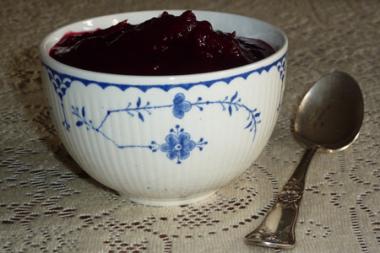The New Year is supposed to begin with the telling of home truths, so I offer this one: all too often—with occasional distinguished exceptions—I don’t like homemade presents as well as store-bought presents, or home-cooked food as well as storebought viands or dishes served in a restaurant.
When my husband and I have company for a meal that includes dessert, one of my kitchen secrets is that dessert doesn’t come from the kitchen. It comes from the Henion Bakery, whose staff can make better cake, eclairs or fruit tarts than I could make if I lived to be 100. To me such an occasion seems the perfect moment, not to fuss longer over a hot oven—which is already busy bringing up the savory flavors of a sweating leg of lamb or of chicken slathered in salsa—but to support a local business.
Or I may grab something from Bakery Normand in Northampton. I’ve never had a guest whose curiosity about whether I had made the dessert myself lasted for a second after she took the first mouthwatering bite of fresh hazelnut torte from Normand.
But if something homemade is really, demonstrably, deliciously better than what you can buy, that’s different. Compellingly different. A year ago at Christmas, I made a discovery that scored a trifecta for the argument that homemade can be better.
It happened because I made my way all the way through Stop and Shop to the produce section without remembering to buy a can of cranberry sauce. Just as I became conscious of my omission, I found myself staring at bags of Cape Cod cranberries. Hard little things and rather bitter, I thought, but my locavore impulse spoke up and said, Support the growers, not the processors. Buy these Massachusetts cranberries. How hard can it be to get the juice out of them? Try making sauce. Just improvise.
Once home, I emptied the berries into two cups of boiling water, waited until they looked properly subdued and then crushed them with a potato masher. The juice ran and the berries turned to a glowing garnet red. I added a little honey, probably a tablespoon, and simmered it for about 30 minutes, then decided it still needed sweetening and added a trifle more honey. I cooked it down until it grew thick and sticky enough to qualify as sauce, then let it cool a little and had a taste.
The result transformed my concept of “homemade,” which in my experience had too often translated to uncertain and inferior. This sauce was as unlike the canned sauces I had eaten all my life as rich wholegrain breads are unlike the tasteless white stuff a lot of us ate in the 1950s. The flavor, like the color, was deep, bright, unbelievably vivid. The remains of the berries, swimming in their winey juice, provided texture. The vibrant taste added not only contrast but glamour to the flavor of the turkey; later we used the leftover sauce on chicken and even fried fish with equally satisfactory results.
The beauty of making your own cranberry sauce, apart from the ease of it (a child could make it; in fact, that’s not a bad idea) is that you can dress it up with whatever you and your family like. You can put in anything from raisins, currants and/or nuts (sounds more like salad than sauce to me, but if this is about anything, it’s about doing it the way you like it) to various spices like cinnamon or nutmeg. You can throw in a little orange juice. My personal recommendation is to slip in a couple of tablespoons of Amaretto. Put the sauce in the most beautiful small dish you have, and it’s a jewel of color and flavor on your table.
So this Christmas, once again we had our own sauce, a touch that made the dinner something more than an exercise in stuffing and roasting a bird and pounding a resistant though tasty rutabaga. We had our favorite sauce, not our favorite brand of sauce. That’s a meaning of “homemade” that even a food snob can love.



